Six post-purchase emails to turn customers into raving fans
In a perfect world, customers would buy your products and fall in love with them and your brand. They’d write great reviews online and recommend you to everyone they know. They’d become fans and advocates of your brand.
In reality though, customers rarely become loyal fans when the only significant interaction they’ve had with that business was to hit that “Buy Now” button.
But they often do when that business takes the time to get to know them, to interact and to build a relationship with them after they’ve closed the sale.
Email can help with that. Because, you see, email isn’t and should never be just about selling. It’s also about informing, educating and delighting customers.
Let’s look at the six types of post-purchase emails you can send to customers to turn them into loyal fans of your brand.
(If you need a more basic grounding in email marketing, why not take our free email marketing course to get started?)
1. Digital receipts and order confirmation emails
When a customer buys a product, the first email they expect from you is their order confirmation. Therefore, it is no surprise that we see so much engagement with confirmation emails – up to double the average open rate of promotional emails.
However, most ecommerce sites squander this opportunity by simply listing what the customer purchased, how much it cost and when they can expect to receive it.
While this information is necessary and expected, try to inject some personality into these emails. Set expectations. Build anticipation. Make them feel like a gift is about to be placed on their doorstep.
Here’s a great example from Fitbit:
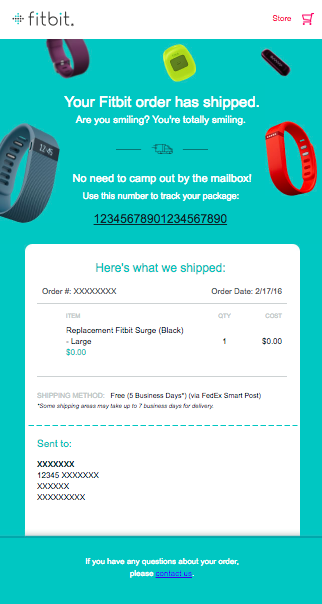
This example from Fitbit is simple, friendly and effective.
You can always go beyond the typical confirmation email and add a personal message, a FAQ section or more, like the team at bergfreunde.eu do:
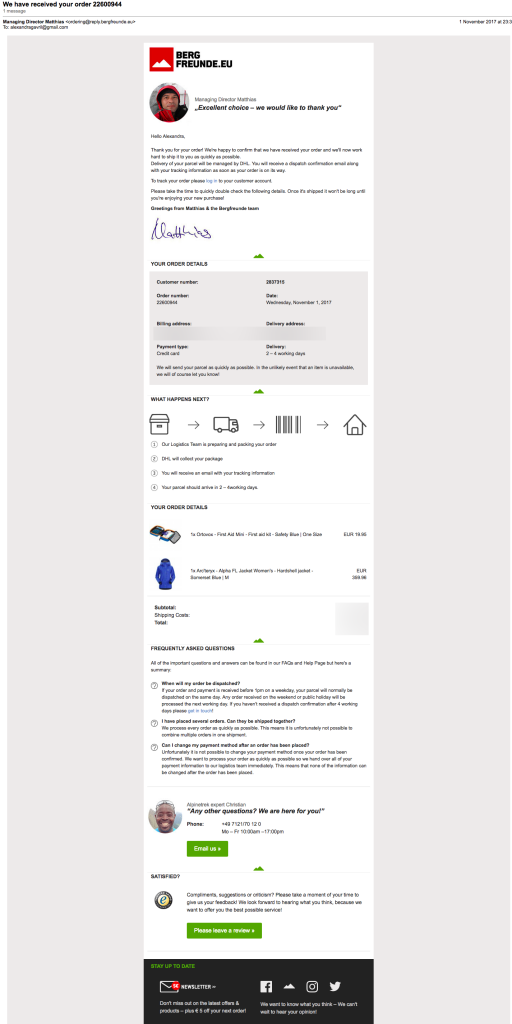
The personal message from the managing director as well as the photo and contact information of the support team member are a nice touch. They show that they care about their customers and are always happy to help with whatever they need. And isn’t this the foundation for turning a customer into a fan?
Bottom line: confirmation emails are a fantastic opportunity to start a conversation with customers, to share their excitement and to answer their questions. So focus on being helpful and friendly rather than transactional. That will increase your chances of turning customers into loyal fans.
2. How-to emails
Whether you sell software, travel gear or a fitness programme, your customers don’t know your products as well as you do. So make sure you send them all the help and information they need to ensure they make the most of their purchase.
For example, ActiveInbox, a task and email management app for Gmail, send lots of useful emails with short tutorials and tips to use the app to stay productive and organised. Here’s one:
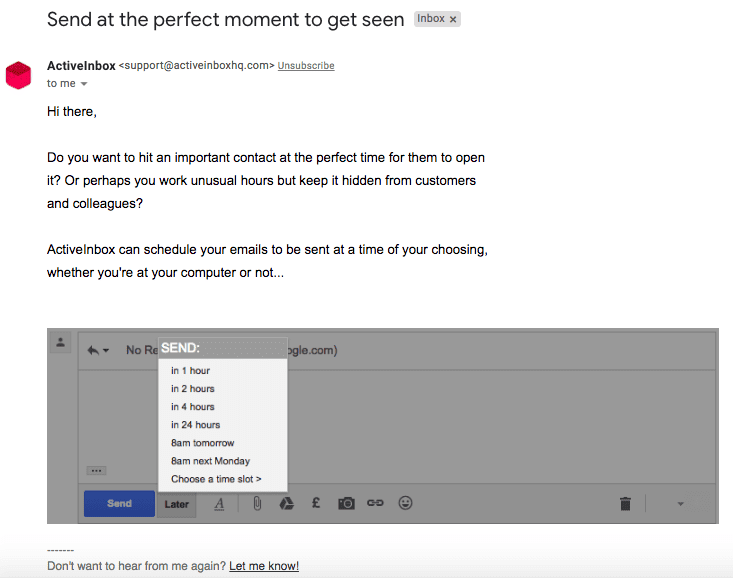
If your product is complex, you might consider using the same approach.
Of course, you can send other types of how-to content as well such as blog posts, FAQs, videos, infographics and more. Anything that can be helpful, interesting and relevant to your customers.
3. Reminder emails
If someone buys a product from you but stops using it after a few days or a week, there must be a reason. What if they can’t figure out how to use your app? Or what if they don’t feel motivated to keep going with your fitness programme?
If you don’t jump in, chances are they’ll end up regretting their purchase and feel like it was a waste of their hard-earned money.
This is your opportunity to be helpful. So try sending out timely reminders with tips and advice to entice customers to keep using your product and make the most of their purchase.
Here’s a simple example from duolingo:
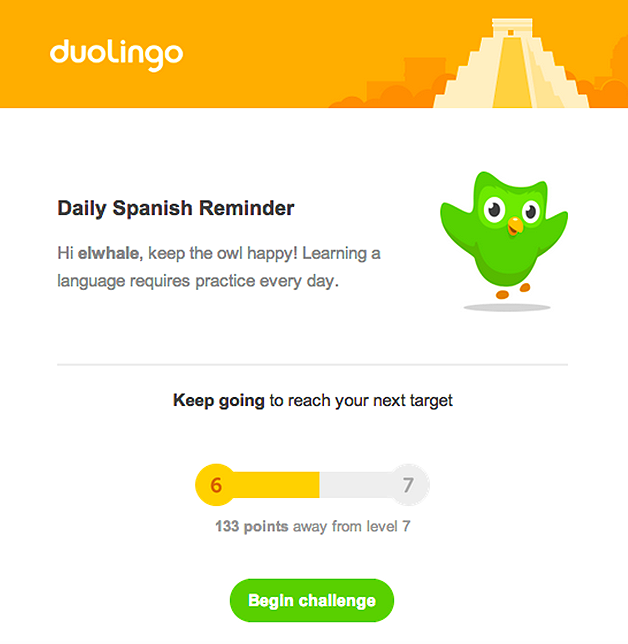
And here’s another one from teespring:
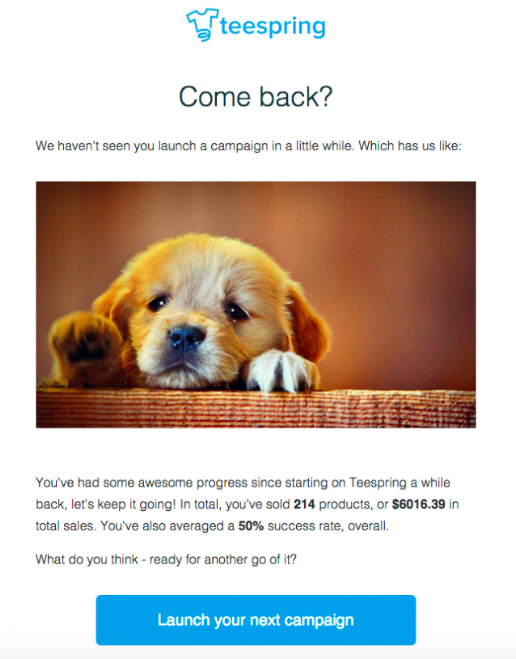
4. Survey emails
After someone’s had time to use your product and learn how to make the most of it, you’ll want to know how they feel about it. Do they like it? Has it helped them to achieve their goals? Would they recommend it to their friends and family?
The best and easiest way to get this type of feedback is by sending a short survey. And by short survey we mean a single-question survey where you ask customers to rank how likely they are to recommend your product on a scale of 1 to 10.
This is called the Net Promoter Score and lots of businesses use it to find out how happy customers are about their purchase.
You can learn more about using surveys to monitor customer satisfaction in this guide.
Here’s an example of a survey email: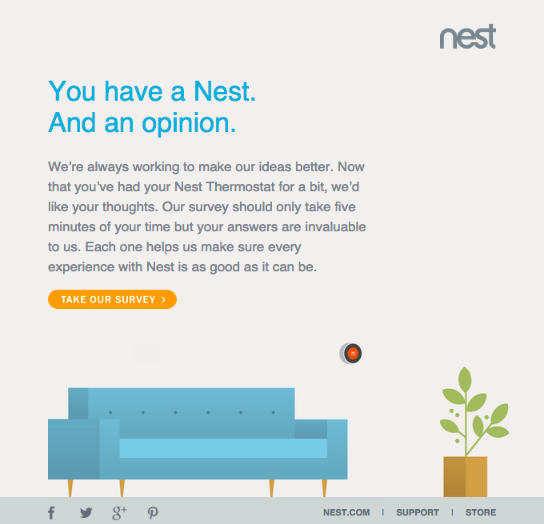
You can even offer a discount to entice more customers to fill out the survey, like The Frye Company did in this example:
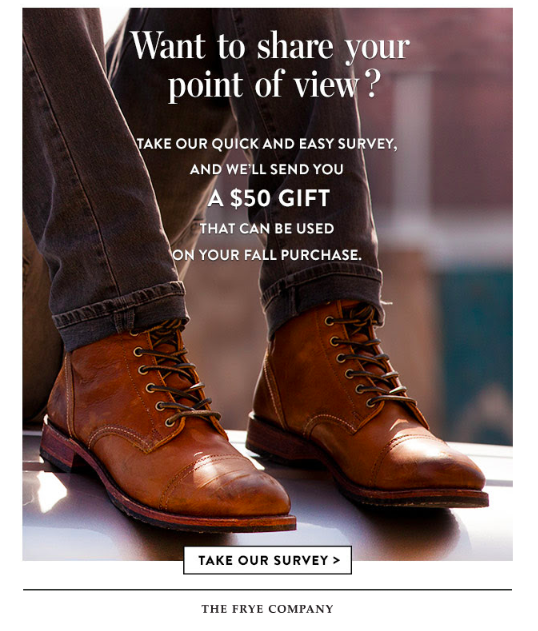
Don’t forget to check the results of the survey to see what your customers’ experiences have been with your products and brand.
For example, if you have customers who replied that they’re very likely to recommend the product, follow up and offer a gift or a discount to thank them.
If there are customers who replied that they’re very unlikely to recommend the product, follow up and ask about the issues they’re having with it and what you could do to improve the product and their experience.
Don’t forget to also act on those suggestions for improvement and to thank customers for their feedback by offering a replacement or a discount on their next purchase.
5. Surprise emails
Every customer isn’t the same. Some buy just once, some keep coming back while others recommend and promote your products on social media, and probably offline too, to their friends and family.
It’s your job to notice these customers that stand out above the rest so you can then nurture and reward them.
The first thing you’ll want to do is to segment your mailing list based on behaviour. This allows you to send relevant emails to customers based on their behaviour like purchase amounts, website visitors to a specific product page or date of last purchase.
This may seem complicated but it’s actually not, especially when you use a professional marketing tool. With it you can segment your list so you can target specific groups of customers. You can also send automated emails that are triggered to send when an action or event has occurred such as a birthday.
Once you’ve segmented your list to include those superstar customers who love your products and brand, reward them.
Email them anything from a personalised thank you note to a free gift or a generous discount on their next order, like in these examples below:
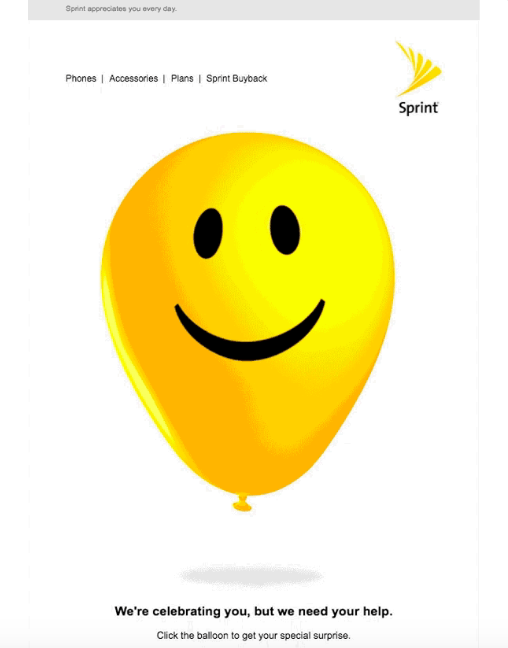
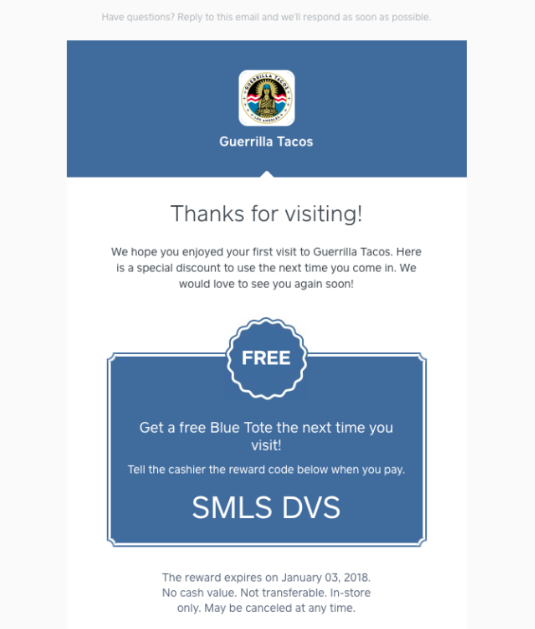
6. Customer information emails
The more you know your customers, the easier it is to send them relevant content and offers they’ll enjoy. And the easier it is to turn them into fans.
But how can you learn more about them? After they place an order with you, usually you get their name, address, order details and history. Wondering how you can get more information?
Try asking! Instead of guessing and sending them content or offers that they might not be interested in, use email to learn more about your customers, their likes and dislikes, interests, passions, problems.
A simple way to do that is to send a “set your preferences” email like this one:
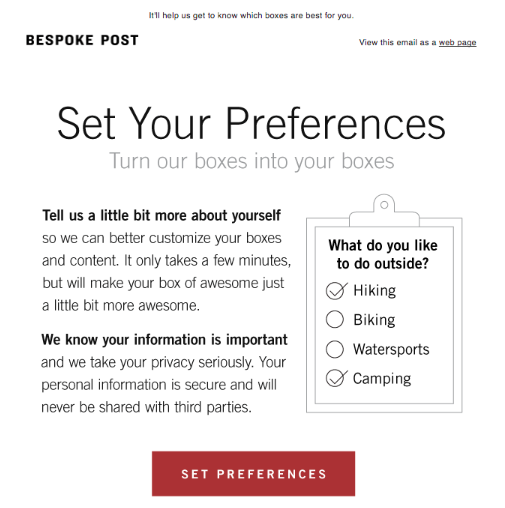
Depending on your business, you can ask them anything that can help you to better segment your mailing list.
For example, if you sell a fitness programme, you can ask them about their goals or which activities or exercises they enjoy most.
Once you get those extra bits of information, you can tailor your emails to ensure they are relevant to each group of customers and their specific interests.
Wrapping up
Having an ecommerce store and selling products online means you’ll likely never meet most of your customers in person. That’s why it’s so important to make the most of email to communicate, educate, delight and build a relationship with your customers.
Hopefully, you’ll find these six emails useful when building post-purchase campaigns that turn customers into loyal fans.
